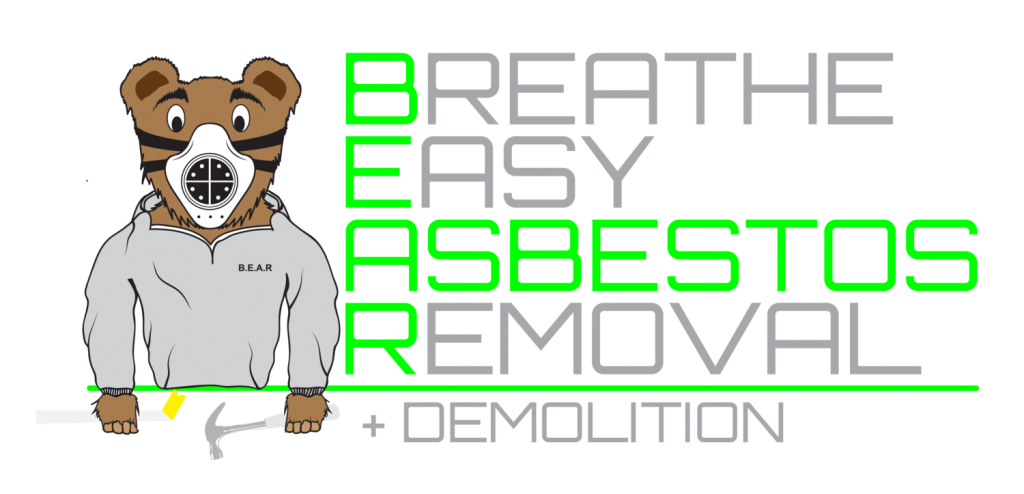WHAT RISK DOES ASBESTOS POSE TO MY FAMILY OR COLLEAGUES?
The inhalation of asbestos fibres has been proven to cause asbestosis, a respiratory lung disease, as well as lung cancer and abdominal cancer and has been linked to others.
Bonded asbestos will not generally pose a risk unless it is broken and fibres are released into the air. Like other building materials, bonded asbestos can usually only be broken by impact or force, whether it be intentional demolition, or accidental. Asbestos that is exposed to the elements (eg external sheeting or fences) is consequently at risk of erosion and is therefore a higher danger than internal sheeting.
Friable asbestos is highly dangerous as it crumbles very easily. Friable asbestos should not be touched or approached under any circumstances.
WHAT ARE THE PROCEDURES INVOLVED IN REMOVING ASBESTOS?
Our crew takes the highest possible safety precautions to ensure the safety of the work site. The affected area is fully isolated prior to the start of works, and the area is fully decontaminated before the containment is disassembled. The crew is required to wear full-body protective equipment at all times to ensure their personal safety. No unauthorized person is allowed on site at any time.
The procedure of removing asbestos is quite different to regular demolition. All asbestos sheeting is wrapped and placed in containers (trucks or skip bins) before leaving the affected area to travel immediately to an authorized disposal site. All equipment is either disposed of or fully decontaminated before leaving the work site to ensure that no fibres are unintentionally released. The site will be left in a clear and safe state to enter.
HOW MUCH WILL IT COST TO REMOVE ASBESTOS?
Many factors affect the cost of asbestos removal including ease of access, the condition of the asbestos in question, and the general size and scope of the job. The best way to establish the actual cost is an on-site inspection. To arrange a physical inspection, contact us on 0473 999 333
For more detailed general information on asbestos, read our ‘What Is Asbestos’ information page.
I RECEIVED A MUCH CHEAPER QUOTATION, WHY IS THERE SUCH A PRICE DIFFERENTIAL?
Unfortunately there are still many smaller backyard style operations that cut corners on asbestos removal. Asbestos is an extremely hazardous material and a single fibre can cause serious health issues to humans and animals. If any dust is left behind after removal it remains just as hazardous to humans and pets as it would be during removal. We follow all of the government regulations for safe removal ensuring asbestos exposure levels remain below safe boundaries during the removal process and, just as importantly, we ensure that no asbestos material is left behind.
IS THE CONTRACTOR’S EQUIPMENT UP TO DATE AND CORRECTLY MAINTAINED?
The most important piece of asbestos removal equipment is the H-type HEPA rated asbestos vacuum cleaner. These vacuums are used to decontaminate the work area of all visible and invisible asbestos debris. If they are incorrectly maintained, or have been mistreated during transport/use, the filter can become damaged and lose its efficiency. If this occurs the vacuum could actually be pumping out dangerous asbestos fibres into your home. The only way to ensure this doesn’t happen is to care for the equipment, to have a maintenance program in place, and to ensure all H-type equipment has a current DOP (Dispersed Oil Particulate) testing certification. This is an scientific test which must be undertaken on asbestos removal equipment every year. This is a legal obligation so if your contractor can’t provide this documentation, you should not trust them with your project.
DOES YOUR CONTRACTOR PROVIDE THEIR WORKERS WITH A HEALTH SURVEILLANCE PROGRAM AND PROFESSIONALLY CERTIFIED RESPIRATOR FIT TESTING?
Whilst this won’t affect you directly or play a part in your removal project, it is certainly an indicator on the contractor’s commitment to safety. It is a legal obligation to provide fit testing and an ongoing health surveillance program for its employees, but incredibly, many contractors still don’t provide these services. If your contractor can’t provide these documents you should wonder what other corners they are cutting.
WILL THERE BE AIR MONITORING DURING THE PROJECT AND AN INDEPENDENT CLEARANCE INSPECTION AFTER THE PROJECT?
Air monitoring is the measure of airborne/respirable fibres which can be released during asbestos removal works. This is not legally required on every non-friable job but is recommended and should be strongly considered. Talk to us and we will assist you in determining if it should be undertaken on your project. A clearance inspection is the inspection of the workplace by a licensed competent person following the asbestos removal works. It will ensure that all asbestos, residue and dust has been correctly removed and that the work area has been adequately decontaminated. Not only is this required to ensure your family has a safe home to return to, it is also a legal obligation. If your removal contractor doesn’t book a clearance inspection following the works or tells you it is your responsibility, they should be reported to Workplace Health and Safety QLD immediately. This is the final step of the asbestos removal process and any dangers must be picked up now prior to somebody being inadvertently exposed.
BEAR AUSTRALIA GROUP PTY LTD
PIONEERS OF QUALITY
FULLY LICENSED AND INSURED
CENTRAL AND NORTH QUEENSLAND LOCALS


